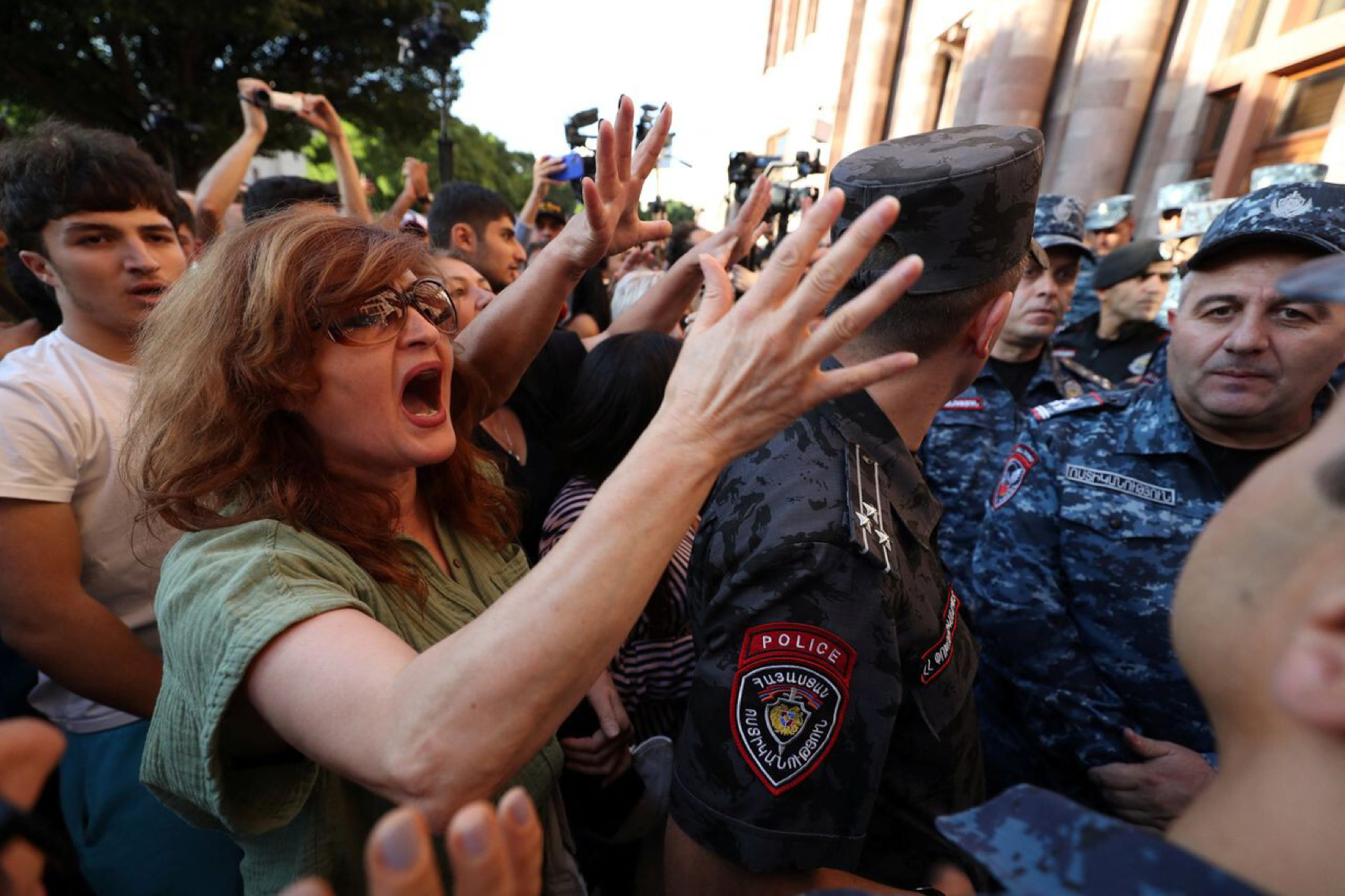Azerbaijan’s assault against the disputed enclave comes as Russia focuses on its invasion of Ukraine
Azerbaijan launched an assault Tuesday on Nagorno-Karabakh, a restive enclave that sits inside its territory but has been claimed by Armenian-backed separatists since it broke away following the collapse of the Soviet Union.
After three decades of armed conflict over the region between the two countries in the South Caucasus, Azerbaijan appears to be taking advantage of a moment when its powerful neighbor Russia—which has projected itself as a peacekeeper—is concentrating military resources on its invasion of Ukraine.
The move is also a sign that Russia’s costly war in Ukraine, now its 19th month, is altering power dynamics in the region where the U.S. and Turkey look to play a bigger role.
Why are Armenia and Azerbaijan fighting?
NEWSLETTER SIGN-UP
What’s News
Catch up on the headlines, understand the news and make better decisions, free in your inbox daily. Enjoy a free article in every edition.
T ensions between Azerbaijan and Armenia have been simmering since 2020, when Russia brokered a cease-fire between the two. Under the deal ethnic Armenians kept control of Nagorno-Karabakh’s biggest city, Stepanakert, and its surroundings, while the Azeri government pledged to guarantee the rights of Armenians in the territories it reclaimed.
But Russia hasn’t been able to fully enforce the deal. Sporadic cross-border shelling has claimed the lives of service members on both sides.
Armenia has been warning for months of a possible bid by Azerbaijan to wrest back parts of Nagorno-Karabakh, saying Russia was no longer a guarantor of safety in the region because much of its military power was tied up in Ukraine.
Moscow has responded by criticizing statements by Armenia, and calling on both sides to honor the terms of the 2020 cease-fire.
What else has Russia got to do with it?
Since the breakup of the Soviet Union, Armenia has been an important security partner for Russia and houses one of a handful of military bases the Kremlin maintains on foreign soil.
For Russia, like much of the world, the region serves as an important energy corridor. In the 1990s, Azerbaijan sought to export its oil and gas without relying on the Russian pipeline network by building its own. A gas pipeline completed in 2019 runs close to what was the conflict front line and stretches across Turkey, and is intended to help ease Europe’s reliance on Russian gas imports.
Russia has sought for years to prevent the conflict from spilling over and to keep ethnic Armenians able to resist assaults by Azerbaijan, which is backed by Turkey, and has presented itself as a peaceful mediator.
The Armenian government in Yerevan has expressed growing frustration with Russia’s failure to maintain peace and questioned Moscow’s commitment and capacity to be involved in the region.
How old is this conflict?
Its roots date to the final years of the Soviet Union. In 1988 tensions arose in the mountainous enclave, which was then still part of the USSR. The region’s ethnic Armenians, who are the predominant group in the area, rose up to demand unification with Armenia. Armenia took over the region during a six-year war that claimed some 30,000 lives and displaced hundreds of thousands of people.
The violence ended with a 1994 cease-fire that froze the conflict along a boundary, known as the line of contact, between the two sides. But regular fighting has broken out since. The conflict has forced hundreds of thousands of civilians to flee their homes for safer parts of the territory or Armenia. Roads, electricity and gas and communication networks have been damaged across the region, officials from both Armenia and Azerbaijan say, though both deny targeting civilians.
Armenia says the province is a historic part of its homeland and cites a 1991 referendum—in which the majority ethnic Armenian population of Nagorno-Karabakh decided to break away from Azerbaijan—to justify its support for the region. Azerbaijan cites United Nations resolutions that specify that the province is part of its territory.
What’s the U.S.’s involvement in the conflict?
The U.S. has long been involved in international efforts to find a permanent resolution to the Nagorno-Karabakh conflict through what is known as the Minsk Group, a diplomatic initiative co-led by Washington, Moscow and Paris. But those efforts didn’t prevent further fighting.
The most-recent escalation follows military exercises in Armenia earlier this month conducted jointly with U.S. forces.
Could these tensions lead to war?
The flare-up of the conflict over Nagorno-Karabakh is unlikely to affect Russia’s campaign in Ukraine or prompt overt military action from other countries in the region. Azerbaijan is seeking to build on its gains in Nagorno-Karabakh after a successful military campaign in 2020, when it managed to reassert control over much of the territory.
At that time, Russia brokered a cease-fire, promising to stop the violence and ensure freedom of movement for both sides through the Lachin Corridor, the main road connecting Nagorno-Karabakh to Armenia and a critical route for the delivery of food, fuel and medicine to the enclave.
But Moscow hasn’t been able to enforce the deal and the enclave has been under effective blockade by Azerbaijan for the past year, cut off from vital supplies from Armenia.
Under the agreement, ethnic Armenians remained in control of Nagorno-Karabakh’s capital, Stepanakert. On Tuesday, Azerbaijan began an assault on Stepanakert in a bid to take the city.
It is likely that the current escalation will end with another cease-fire, improving Azerbaijan’s position at the same time Armenia’s traditional partner, Russia, is less able to shore it up.




